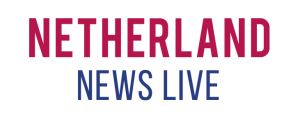Greetings, dear readers. Today I am going to talk about banks in the United States. This topic is quite extensive as it requires an in-depth analysis of each of the banks. When writing this article I used the Credit Card Utilization Ratio Calculator, which helped me to analyze the credit card conditions of American banks more deeply.
A total of about 72,000 respondents were surveyed.
It turned out that U.S. residents are mostly satisfied with their banks and their work. Credit unions and online banks were very often praised. A total of 148 financial institutions were reviewed, including 69 traditional banks, 70 credit unions and 9 online banks.
Among the factors that influenced the position in the survey, the main were: the quality of customer service, waiting time in line, the convenience of the institution’s website and its hours of operation.
It turned out that the highest rates were for relatively small banks. The first places were occupied by two regional banks.
First Republic Bank, headquartered in San Francisco, California, and Frost Bank, based in San Antonio, Texas.
Just below are First National Bank of Omaha, whose headquarters, as is already clear, are located in the main city of Nebraska, Omaha, and Third Federal, a bank based in Cleveland, Ohio.
All of these financial institutions have received very high marks from their customers. By contrast, the nation’s largest banks such as Bank of America, Wells Fargo and JPMorgan Chase received more modest reviews.
Among these three financial giants, JPMorgan Chase is the leader and a little behind the front lines.
At this bank, customers noted the convenience of online services and mobile apps, as well as up-to-date advice on various financial products. Consumer Reports noted a significant increase in satisfaction among customers of various credit unions.
The U.S. population has become significantly more likely to trust these financial institutions, and the main reason for this was the low interest rates on loans.
Online banks also received high marks from their customers. Ease of use, openness and favorable terms attract more and more people.
The leaders among these financial institutions are USAA, Schwab Bank.
One of the institutions, which gained the least amount of positive reviews was HSBC Bank CR. More than half of its customers were not satisfied with the level of service and efficiency of online services. Bank representatives say that they have already begun to develop a program to improve customer service and modernize the virtual banking.
Forbes surveyed U.S. banks, looking at return on average tangible total capital, return on average assets, net interest margin, efficiency ratio and net charge-offs as a percentage of total loans.
Forbes also takes into account non-performing assets as a percentage of assets, CET1 ratio, risk-based capital ratio, reserves as a percentage of non-performing assets and growth in operating income.
The top three U.S. banks all hail from California: CVB Financial, SVB Financial and Pacific Bancorp. Home BancShares, which has been the highest-ranked bank for two years in a row, ranked No. 4.
Interestingly, small banks and those focused on commercial lending continue to dominate the top of Forbes’ list: no bank in the top 20 had more than $100 billion in assets. The big four in the U.S. banking system – JPMorgan Chase, Bank of America, Citigroup and Wells Fargo – have combined assets of $9.1 trillion, or more than half of the total U.S. Muncie, Western Alliance Bancorp, Winging, Prosperity Bancorp, Kalispell, and DeWitt are in Forbes’ top 10.
Which one to choose?
Lifehacks.
Lifehack #1.
Take your time.
The most important thing about a deposit is its interest rate. But do not lose your head if the financial institution offers a more or less high yield.
To save your savings, it is better:
Don’t chase a high interest rate;
“Behind a high interest rate a bank can hide its problems, which it wants to solve at the expense of depositors. As a rule, small banks like to sin with this, so it is better to entrust your money to large players who have at least 60-70 branches and a large number of assets.”
Do not withdraw your money before the deadline, so as not to lose the high interest;
Lifehack #2.
Read the contract carefully (especially the terms, amount, and replenishment options).
What you should pay attention to first:
Term.
The most profitable deposits are made for a period of one year or more, the longer you do not withdraw your money, the more profitable. Another subtlety – pay attention to the number of days in the contract and the date it ends.
Sometimes depositors do not notice that banks put 370 or 380 days instead of 365 days, close the deposit earlier and lose interest. The possibility of replenishment. Deposits with a replenishment option are often characterized by a lower interest rate.
If you want to keep a certain amount, put it on a regularly replenished account, and when you have enough money, open another deposit. Deposit the principal amount at a higher interest rate.
Lifehack #3.
Keep an eye on the interest rate on the deposit and the refinancing rate.
The rate may be floating. This means that high interest will not accrue for the entire term, but only part of the time.
Lifehack #4.
Calculate in advance how much you will earn on the deposit.
The easiest option is to use the calculator on the bank’s website, but here you need to consider the terms of opening a deposit.
Online.
Takes a lot of time, but adds up to 1% to the deposit. It is enough to activate a personal account and open an online bank in the selected organization (usually it is free).



